As noted in my previous articles about Jones Field, the airport got its start in late 1928 when successful businessman and former Bonham citizen, Charles Jones, gave a gift of $10,000 to the City of Bonham to build the facility. After matching Jones’ gift with taxpayer dollars, the city opened Jones Field, named after Charles’s father, George Jones, in late 1929.
Jets at Jones Field: A brief history
The airport took on a hugely important role during World War II as a primary training facility where recruits were taught to fly.
After the war, the aviation industry focused on developing and perfecting jet engine technology. Before long, passenger airlines began using jet aircraft. Airports in sizable cities began making improvements, namely constructing longer runways, to accommodate larger and more powerful planes.
Being a small, rural town, Bonham officials saw no need to make such changes to Jones Field. The airport, as it was, seemed perfectly suited for local purposes.
However, in the early 1960s one local businessman began arguing that significant improvements to the airport could lead to economic growth for Bonham. In a letter, dated September 8, 1962 and stapled to the minutes of the September 10 city council meeting, W. E. Biggerstaff stated that the city should lengthen the runway, roughly 3,000 feet long, to a minimum of 6,000 feet, which would easily accommodate jets. “This improvement could be accomplished,” he wrote, “by a Bond Issue, (and) help from the F. A. A. . . .” He further argued that “assistance could be obtained from the Military as a stand-by emergency field.”
A veteran jet pilot recently told me that if the city had adopted Biggerstaff’s recommendations, and had made jet fuel available as well, the number of jets utilizing the airport would have been impressive. Unfortunately, the whole idea fell by the wayside. Nonetheless, there has been some jet traffic at Jones Field over the last forty years.
Perhaps the most notable flight was the first one. Not just because it was a jet, but because of who flew it. But, before I get to that, a little background is needed to set the stage.
It was late 1970 when Henry G. “Hank” Beaird moved with his family to Bonham. It is no exaggeration to say that Beaird was a legendary figure in the aviation field. Having flown in the military during WW II, after the war Beaird went on to work as a test pilot in the aviation industry, eventually landing a position with the Lear Jet company in the early 1960s.
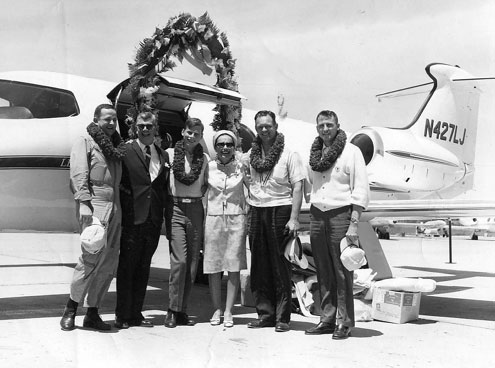
In 1970 the Lear company, located in Wichita, Kansas, changed owners, and Beaird decided that he wanted to change careers and be his own boss in a small appliance store. While still in Wichita, Beaird attended the Western Auto School to learn the basics of store operations. Wanting to be near his parents (Houston) and his wife’s parents (Dallas), he chose Bonham after learning that a local businessman, Joe Shaw, wanted to sell his Western Auto store located on the north side of the square.
By February 1971, Beaird decided that his new store should have a big grand opening with a key guest speaker. He invited his former boss, Lear Jet owner William P. “Bill” Lear, to Bonham.
The front page of the Friday, February 12, 1971 Bonham Daily Favorite reported that Lear would land in his private jet at Jones Field the following Monday.
According to the February 16 Daily Favorite, Lear landed his Model 25 Lear Jet at roughly 10:30 Monday morning. He and his wife, Moya, and youngest son, John and another guest were then greeted by a sizable crowd at the airport.
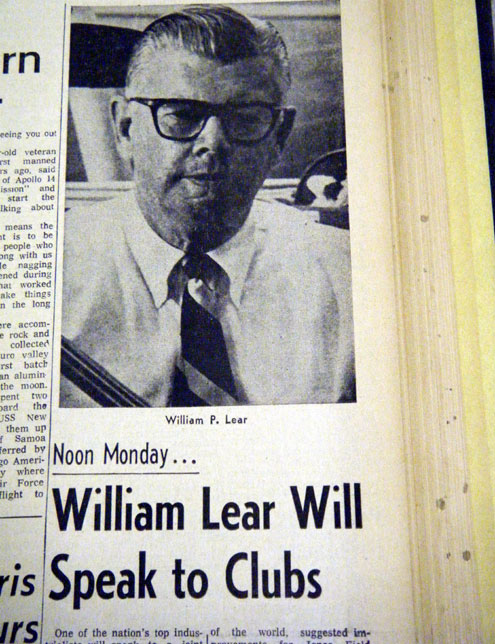
Lear then spoke to a gathering of the Lions, Rotary, Kiwanis, Jaycees and Civitan service clubs at the National Guard Armory. By 2 o’clock he and his guests were back in the air. It was noted as the first landing and departure of a jet at Jones Field. It would not, however, be the last.
The front page of the October 24, 1980 Daily Favorite carried a photograph and brief story on the landing that day of a Cessna Citation II that belonged to the Republic of Texas Bank Corporation. One of the pilots, Al Phillips of Dallas, was no stranger to the area. He had worked at Jones Field as a flight instructor during World War II.
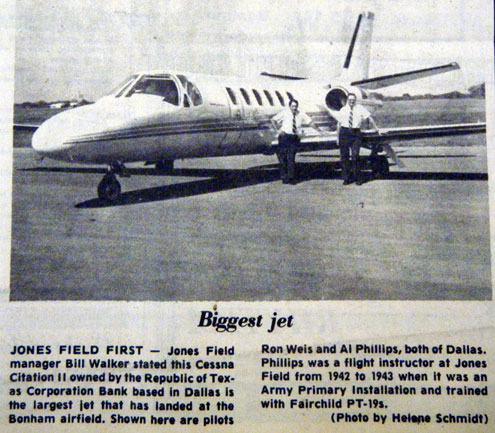
Thanks to recent improvements to the airport, namely lengthening the runway to 4,000 feet and the building of a new parallel taxiway, jet traffic at Jones Field is a little more consistent. Don’t get me wrong, jets are not landing and taking off every day. However, some businesses, such as Clayton Homes, regularly fly company officials to Bonham on Cessna Citations when wind and weather conditions permit.
And who knows what the future holds? One can only imagine what may happen if one day W. E. Biggerstaff’s dream of a minimum 6,000 foot runway, coupled with a supply of jet fuel, is realized. Perhaps it’s not too cheesy to say . . . the sky could be the limit.
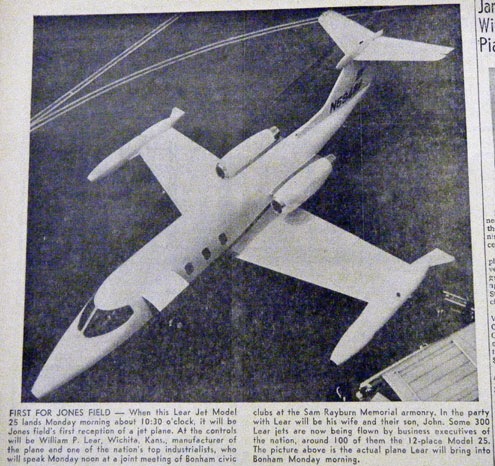
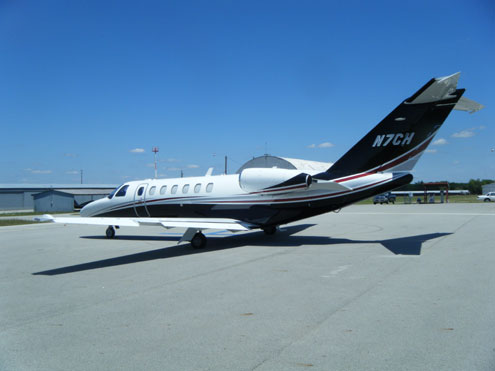
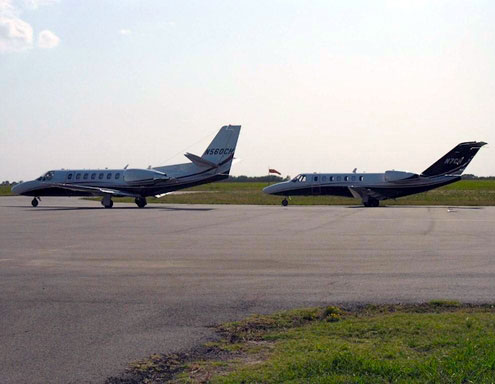
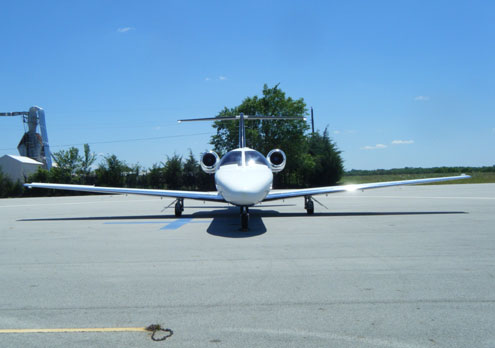
For those interested, Hank Beairds’s impressive biography can be read at the following website: http://www.alabamaaviationhalloffame.com/Bio/Beaird/Induction/index.html
Special thanks to Charles Beaird for information on his parents and their time in Bonham.
Tim Davis teaches at Bonham High School.